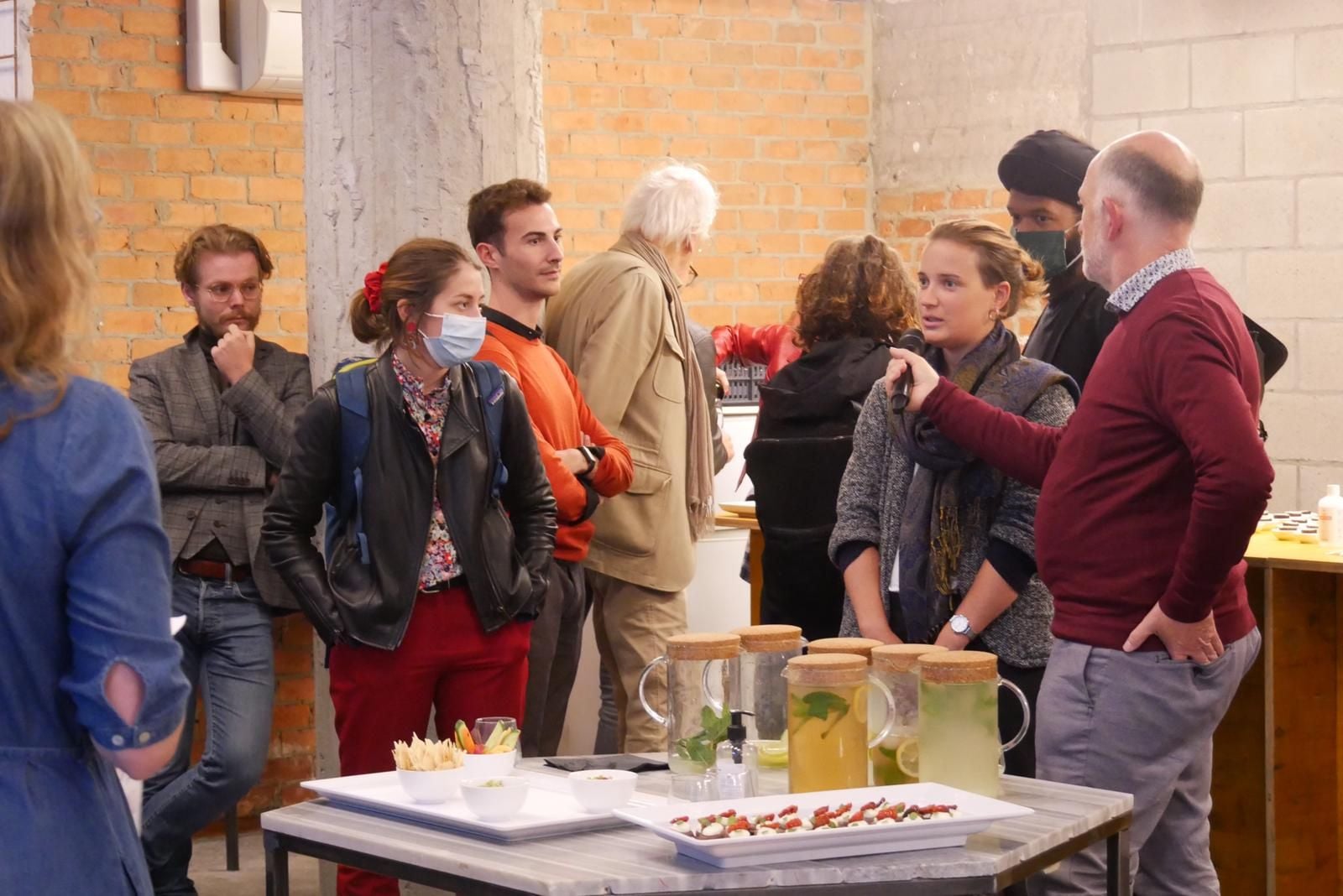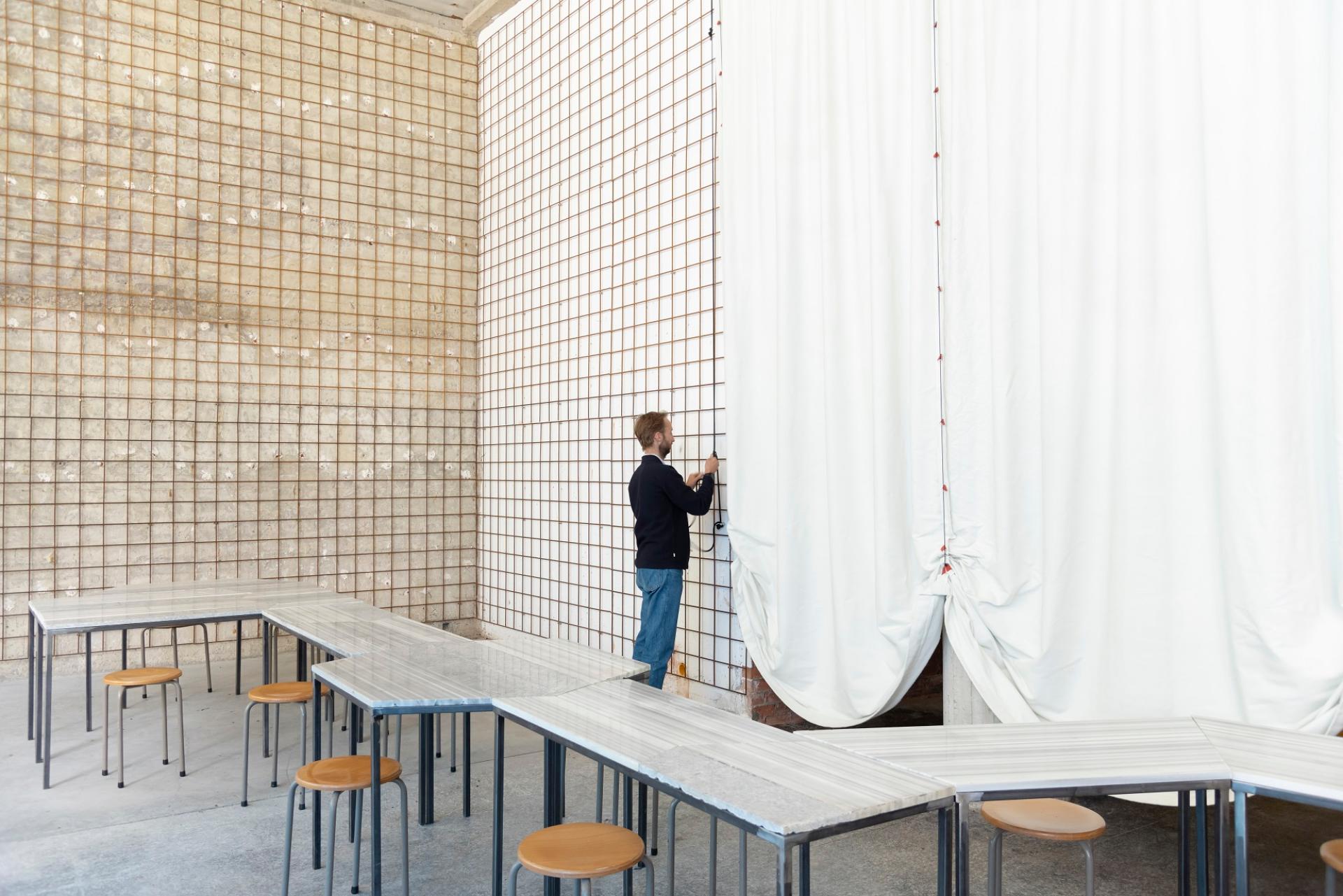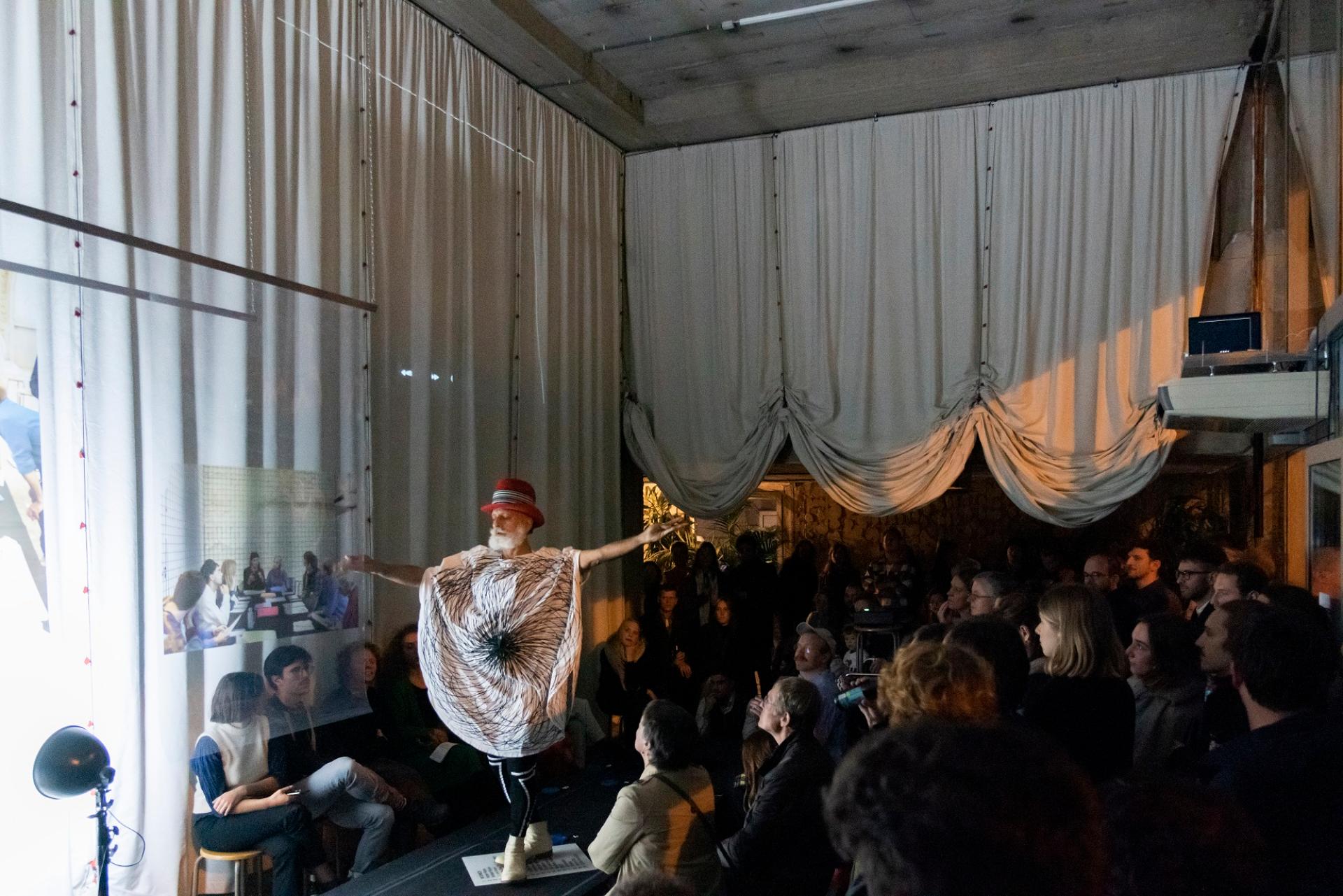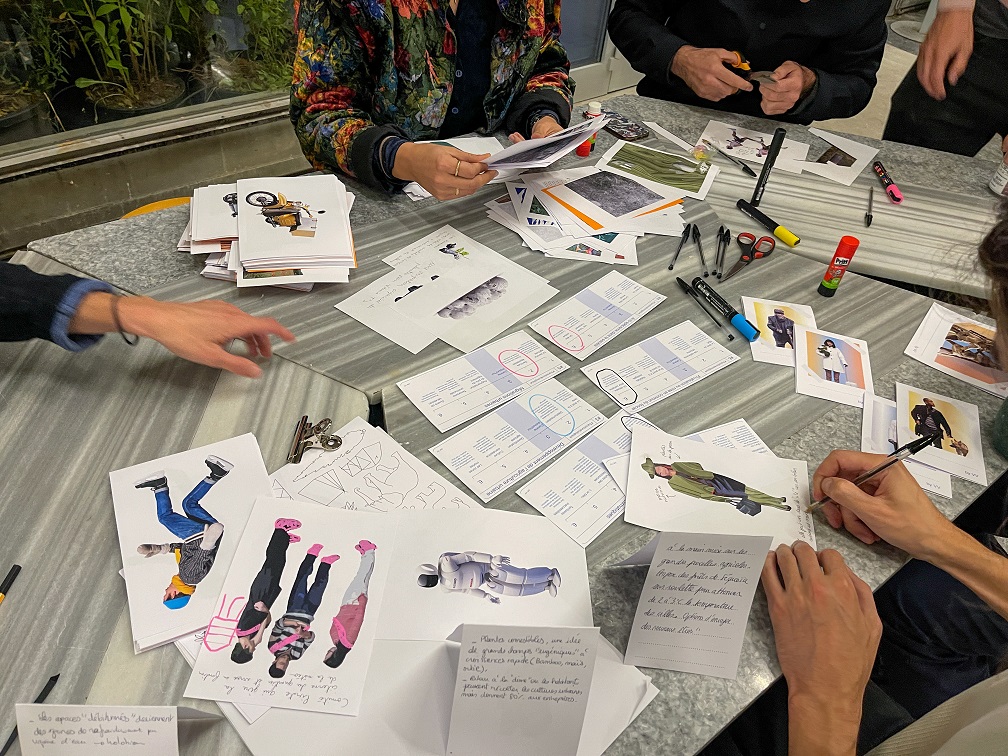StamEuropa
Basic information
Project Title
Full project title
Category
Project Description
You may think that the European district is deserted outside working hours... think again! Behind the façade of the building at 104 Rue d’Arlon, life is flourishing. The building, which had been empty for over ten years, found new life with StamEuropa, a place of dialogue and meeting. Everyone’s welcome: district inhabitants, Brussels citizens and simple passers-by. A passionate debate, creative workshops or astonishing shows; a varied programme invites the visitor to shape Brussels and Europe.
Geographical Scope
Project Region
Urban or rural issues
Physical or other transformations
EU Programme or fund
Which funds
Description of the project
Summary
StamEuropa aims to be an innovative project in the heart of the European District. Located at rue d'Arlon 104 it is a physical space dedicated to exchange and debate. An innovative scenography, different conversation formats and methodologies contribute to a vibrant space of encounter in a European district dominated by its monofunctional office spaces. As such StamEuropa gives the district a new, innovative and participatory dimension.
In a Europe today looking for a new breath through initiatives such as the conference on the future of Europe, neutral places or 'tiers lieux' are crucial. They must be places where dialogue is organised on an egalitarian basis - Alain Deneef, the project's inspirer
StamEuropa is a temporary occupation. The building belongs to the Régie des Bâtiments, the federal building agency of Belgium, and has been empty for more than 15 years. Thanks to an innovative agreement and the intervention of the City of Brussels, the activation of the site was entrusted to the non-profit organisation Equama.
In its fight against abandoned, neglected, vacant or unfinished buildings and land, the City of Brussels imposes a municipal tax. The regulation foresees an exemption of this tax if valuable temporary occupation takes place. On the basis of this instrument, we have placed our trust in the reactivation of the building on the rue d'Arlon. - Lydia Mutyebele, alderwoman City of Brussels.
We hope that the success of StamEuropa will convince other owners to follow suit. This cooperation shows once again that the vacancy tax is a particularly effective incentive. - Mayor Philippe Close:
StamEuropa is in use since the summer of 2021. StamEuropa today consists of an event space, the garage home to Remorquable (a bicycle trailer lending service) and Tournevie (an ecological tool library & maker space) and the upper floors for pop-up performances and exhibitions.
Key objectives for sustainability
StamEuropa is circular in itself. By activating an old office building empty for over 10 years it re-uses a space otherwise unused. More-over during the architectural intervention of 51n4e the aim was to transform the ground floors in an informal space for exchange and debate while using as much as possible the material already present. This resulted in a unique space re-using as many elements as possible: The marble cladding of the fourier is stripped down to become table tops, whose irregular shapes allow for unexpected configurations. Analogously, the bar is made of reused concrete casting elements, while the forest itself brings together plants collected from the emptying of Brussels CCN. The heating system consists completely of reused air source heat pumps from the demolition of offices in Auderghem.
By this temporary activation StamEuropa wants to show what is possible. The European neighbourhood is today in a full transformation. The district dates back from the ‘70’s when a monofunctional office district was created as an answer to the growing European institutions settling in the area. Almost half a century later the way of working and the need for classical office spaces has shifted dramatically, further gaining momentum during the current Covid pandemic. The question arises: what to do with these old office buildings? Instead of breaking them down we believe that there are many possibilities to transform them and give them new functionalities. With StamEuropa we want to showcase this.
Last but not least when looking for temporary occupants in the former garage in the back of the building we stayed loyal to the principle of ‘circularity’. StamEuropa hosts and cooperates with Tournevie, a tool library and maker space. As a tool library they work like a regular library giving easy access the all and preventing its users to go buy tools they would only use once every so many years. Moreover they offer tool trainings and access to their workshop
Key objectives for aesthetics and quality
In response to a general perception of the European institutions as hermetic, the space provides an open space for dialogue, attempting to re-establish a connection between the near yet detached institutions and citizens. In order to achieve that, the logic of the building had to be rethought: not only the building was originally conceived for more formal and scripted encounters, but due to security reasons the whole glass facade has been walled.
To reverse that, such barriers were cut into reversed arches, enhancing a visual connection to the ground floor. To claim a physical engagement with the public space around the building, a continuous plant installation becomes a link between outside and inside, while softer interventions (a stage curtain, carpets, ...) calls for a new type of appropriation. Such interventions are key to lay the ground for a hybrid use of the space, where multiple configurations allow for different uses over time.
Architecturally, all the interventions find their raison d’être in the re-use of the existing: if the empty building becomes a framework for diverse use, its materiality should also be renegotiated. (see also above under sustainability).
The aesthetics of StamEuropa interacts with its mission in a two-way process. The architecture in the service of facilitating dialogue and encounter, its functionality giving the space its unique aesthetics.
Thanks to its unique aesthetics StamEuropa won the Brussels Architecture Prize in 2021 in the category small interventions. A major recognition since the prize highlights Brussels as a laboratory for contemporary architecture and urban planning where innovative projects are actively supported, and as a source of inspiration for an urban policy that reaches far beyond the region’s borders.
Key objectives for inclusion
Inclusion and accessibility are key in StamEuropa’s vision. We do not aim to be the next conference centre, instead the aim is to be an informal space where everyone can easily organise activities and were passerby’s and curious visitors can easily enter and partake in whatever is on at that moment.
In order to do so we first of all make sure that there are no financial obstacles. Depending on the type (profit or non-profit) and size (volunteer-based or a big paid team) the prizing mechanism is adapted. For events reinforcing our mission we are willing to go the extra mile and to do everything to makes sure that it can take place in the best possible conditions, offering our expertise and equipment. Doing so, many small grassroots organisations have found a home in StamEuropa.
Moreover, external organisations and individuals coming to StamEuropa to organise events are pushed to be inclusive and be open to everyone wanting to join. Everything is possible when taking into account openness and mutual respect for all opinions.
Finally, when events are organised by the programming committee, a board consisting of various organisations sharing the same vision and engaged to activate StamEuropa, they take into account rules of engagement aimed as maximal participation of all participants. So no classical debates dominated by so-called experts but formats where everyone has the opportunity to express themselves.
Results in relation to category
The physical transformation of an abandoned building created a real sense of belonging. After its opening weeks, StamEuropa has become a reference points for institutional actors, local civil society, companies, Brussels public agencies, European NGO’s and the local neighborhood committee. Doing so it brought together different actors that otherwise don’t meet, creating a sense of community otherwise absent in the European District.
Despite the Covid restriction in September – December almost 40 activities have been organised. Since many took place over several days, this meant that averagely every 2 days events took place. These events brought together almost 2.000 people with many more online following the hybrid events and the social media. This is not even taking into account the activities taking place in the garage, where Tournevie and Remorquable are active almost daily and open to a wide audience.
For the unique connection between architecture and community-building StamEuropa has been awarded the Brussels architecture Prize 2021 in the category ‘small intervention’.
“The project creates the conditions for new temporary uses in the largely monofunctional European Quarter. The outcome of a collaboration between a diverse group of radical experts, it promotes architecture’s ability to playfully and collectively imagine another future for the city.” – Konstantinos Pantazis, head of the international jury
The successful launch has not gone unnoticed in the local media. Here-under a small selection with clickable hyperlinks:
- Brussels Times – Brussels new ‘StamEuropa’ aims to bring people together in European Quarter
- BX1 – StamEuropa: une maison du dialogue démocratique ouvre dans le quartier européen
- BX 1 - MolenWest Square, Stam Europa : 7 projets architecturaux bruxellois récompensés
- Brussels Times – Brussels Architecture Prize : Who won?
- Knack – Huis van de democratische dialoog geopend in Europese wijk in Brussel
How Citizens benefit
Civil society lies at the basis of StamEuropa. The first contacts between the building owner, the Régie des bâtiments, and the city of Brussels were established through the European Quarter Fund. The latter is a unique public-private cooperation aiming to improve the European Neighbourhood. They quickly realised that the initiative should be piloted by civil society in order to be truly inclusive and create a profound sense of belonging. That’s why the non-profit organisation Equama took the lead in the project. This move put civil society at the core of the project.
Equama in its turn continued this inclusive exercise by establishing a programming board made up from various non-profit organisations. The programming board consists of Stand up for Europe (a pro-European movement), Jubel Festival (a structure organising democracy festivals), Vraiment Vraiment (a co-creative design agency), Missions Publiques (experts in citizen engagement) and Seco – Salon of European Civic Organisations (an open space for non-profit organisations). The aim of the programming board is for its members to activate StamEuropa with activities, safeguards its mission and to make common strategical decisions.
The benefits of making a diverse group of civil society organisations pilot StamEuropa are multitude. First of all they make sure that the focus stays on the mission of StamEuropa and speak up when activities take place or decisions are taken that go against its inclusive and participatory goals. Furthermore by giving a physical space to the ambitions of diverse civil society organisations the seeds for a successful launch and activation had been sown.
Physical or other transformations
Innovative character
The phenomenon of temporary occupations of empty buildings is in itself innovative. It is a recent trend in cities, and particularly in Brussels, which aims to respond to various urban and societal issues. The organisations temporally taking over the vacant spaces organise activities that are in its turn socially innovative, but who do not have the means of acquiring or renting the premises necessary for their deployment. StamEuropa is no exception to this logic. What makes it unique is that it is currently the only temporary occupation of this type in the European district and takes these European dynamics to the heart of its project.
StamEuropa has come to be thanks to the unique cooperation of a wide range of diverse actors, both public and private. The step taken by private real estate operators through the European Quarter Fund is unique as they are generally less inclined to engage in alternative occupations of unoccupied spaces, unlike public actors whose vocation is the general interest. The project has civil society at its core but the dialogue with the private sector remains.
Finally, many organisations active in temporary occupations simply sublet their spaces to others while ensuring that the overall project functions well. StamEuropa however goes the extra mile, taking up a truly active role:
- With our event space, we organise ourselves, and/or co-create with other partners, activities aimed at cohesion and diversity in the neighbourhood. We want to be the missing link with different actors in the neighbourhood that otherwise would not meet, being the bridge between “Brussels-Europe“ and “Brussels-City“
- Through our activities we actively reflect on the reconversion of the European district. By investing in innovative partnerships and pilot actions that go beyond the actual physical space of StamEuropa that we manage, we acquire and share expertise
Learning transferred to other parties
Through the activation of the former office building in Rue d’Arlon 104 and its transformation into StamEuropa, the actors behind the project are prototyping and exploring the potentialities of a European district 2.0. They act by doing, but don’t stop there. Lessons learned through this exercise of action-based learning will be shared widely in the European district and beyond.
In the European district, many buildings can certainly be converted (due to the very likely decline in demand for office space), and this after a transitional period that can be enhanced by temporary occupancy. The lessons learned from StamEuropa can certainly be useful for other temporary occupation projects, but also for the future more structural mix of the district in the long term. StamEuropa as a pioneer will share its lessons learned and plans a first capitalisation effort in 2022. Such capitalisation effort can be done through an extensive external analysis and seminars.
These lessons learned can also offer inspiration beyond the Brussels region. StamEuropa is eager to share its best practices throughout Europe. It among others plans to partake in one of the various Horizon Europe calls in line with the European Bauhaus ambitions. In such a partnership, StamEuropa aims to share its unique expertise.




